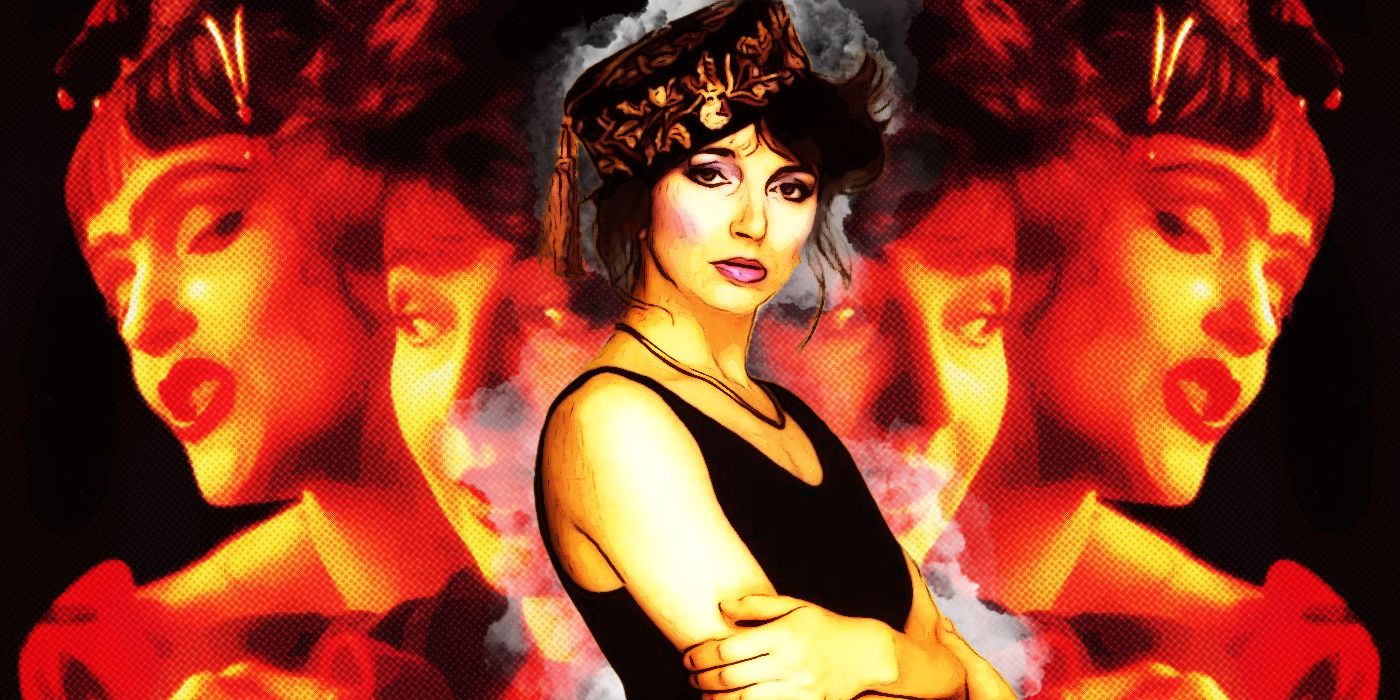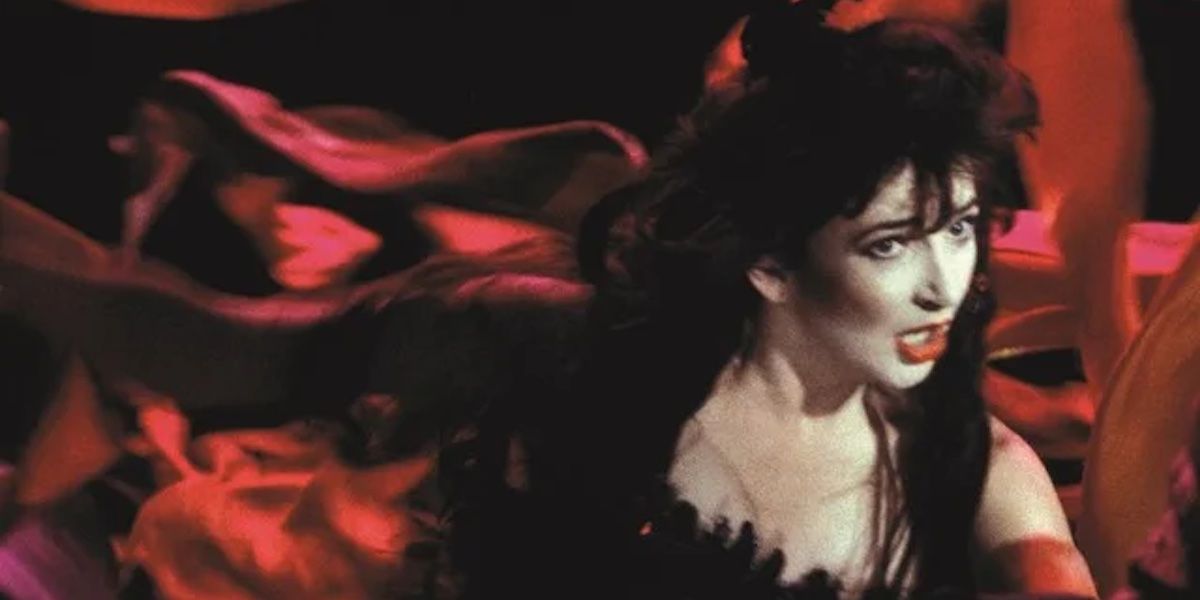Among its many accomplishments, the fourth season of Netflix's Stranger Things has introduced progressive rock goddess Kate Bush to an entirely new audience, largely through the use of her hit 1985 single "Running Up That Hill" at key moments throughout nine episodes. As a result, she's stormed music charts around the world, and her expansive back catalog of almost 45 years is receiving a well-deserved reexploration. While Bush has a slew of impressive music videos, she's only ever appeared in one proper film, 1993's The Line, the Cross, and the Curve—and like the majority of her work, it's an entirely Bush creation, with the epic songstress serving as star, writer, and director. Nearly 30 years after its debut, and with Bush squarely in the center of the public consciousness, now is the perfect time to reexamine her singular cinematic contribution.
Created as a promotional tool for her 1993 studio album The Red Shoes, this short film is a spin on the classic fairy tale of the same name, in which a young woman puts on a pair of enchanted shoes that cause her to dance unceasingly until and unless she can find a way to remove them. Here, we open on Bush's character in rehearsal with her band until a power outage causes them to take a break. Left alone in the studio, Bush is suddenly confronted by a dark and mystical dancer played by two-time Oscar nominee Miranda Richardson, who implores Bush to help her break the curse of the red shoes by drawing three symbols—the titular line, cross, and curve. However, Richardson's ulterior motive soon becomes clear—by receiving the symbols, she passes the curse onto Bush, and flees through a mirror. Bush pursues her and finds herself in another dimension (an Upside Down, if you will), soon greeted by an otherworldly figure portrayed by British dance legend Lindsay Kemp. He tells her she must "sing back the symbols" to break the curse. After visiting an elderly woman named Lily who gives her advice and comfort, Bush draws on the memories of her loved ones to guide her closer to Richardson's twisted prima ballerina. Giving herself over to the sounds of a jubilant choir, Bush is able to regain the symbols, rid herself of the curse, and escape through the mirror, leaving Richardson crushed under the weight of a cave in with only her feet, once again bearing the accursed shoes, sticking out.
Bush had long expressed a desire to collaborate with famed British director Michael Powell, director of 1948's The Red Shoes, itself an interpretation of the classic tale told through the lens of a modern ballet company. However, the two were unable to work together before his death in February 1990, though the inspiration she drew from the film is clear. In essence, the film is en extended music video; it would end up receiving a 1996 Grammy nomination for Best Long Form Video. A recording artist first, Bush's primary storytelling convention is the music itself, and her material is successful in helping express the short's larger narrative arc, taking us through sonic and visual peaks and valleys.
Lead single "Rubberband Girl" kicks off the film—its percussive, steady beat catches the viewer's attention immediately, accompanied by Bush being virtually puppeted by a fellow dancer through a series of simple but effective movements. The whole setup is decidedly unglamorous, a stark contrast to what awaits us shortly. Following the power outage, Bush lights a single candle, drawing us into the atmospheric and moody timbre of "And So Is Love," which also features first-rate guitar work by Eric Clapton. Sensual and dark, it's in direct opposition to the chaotic energy of Richardson's character, a vision in red and black who we meet at the song's end. As she woos and convinces Bush to help her, we hear the album's title track, "The Red Shoes," all Irish jig and pan flute, filled with frenetic and enticing rhythm. Soon, Bush is cursed with the shoes, becoming her own red and black vision, venturing into the mirror dimension and pleading for help. "Lily," named after the wise elderly woman who helps guide Bush on her journey, is a prayer of strength, promising to help Bush "protect herself with fire." Soon, we hear the instrumental strings of the title track once more, and all hope seems lost until Kemp's specter implores Bush to "call on the strength of the ones you love." This leads to the most beautiful song in the film, "Moments of Pleasure," whose lyrics about, "Just being alive/It can really hurt/And these moments given/Are a gift from time" hold perhaps even more significance in light of a world still in the clutches of a pandemic. The final track, "Eat the Music," is a joyous ode to self-expression, self-love, and falling under the spell of the drum, accompanied by Bush swaying along to the sound of an ebullient chorus and visuals of abundant fruit—a signal that the spirit has once again bloomed in her, breaking the curse and allowing her to return to this mortal coil.
Though Bush was reportedly displeased with the final product, it's an artist secure enough in her own power and vision that can create an ambitious piece of film alongside an equally ambitious album. Not one afraid of revisiting her old work, Bush would rerecord a majority of the album's tracks for her Director's Cut project in 2011, and "Lily" would serve as the opening number of her 2014 residency Before the Dawn. As more and more people begin to discover the Kate Bush library, this is the ideal time to take in this fascinating, unique piece of cinema featuring of one of music's most unique artists.


